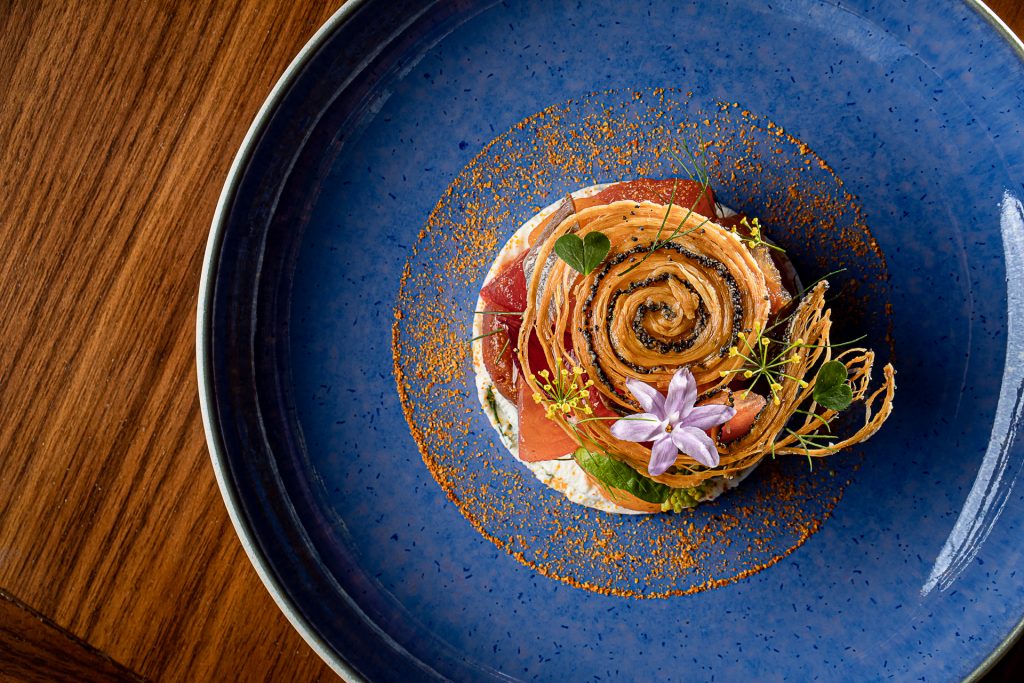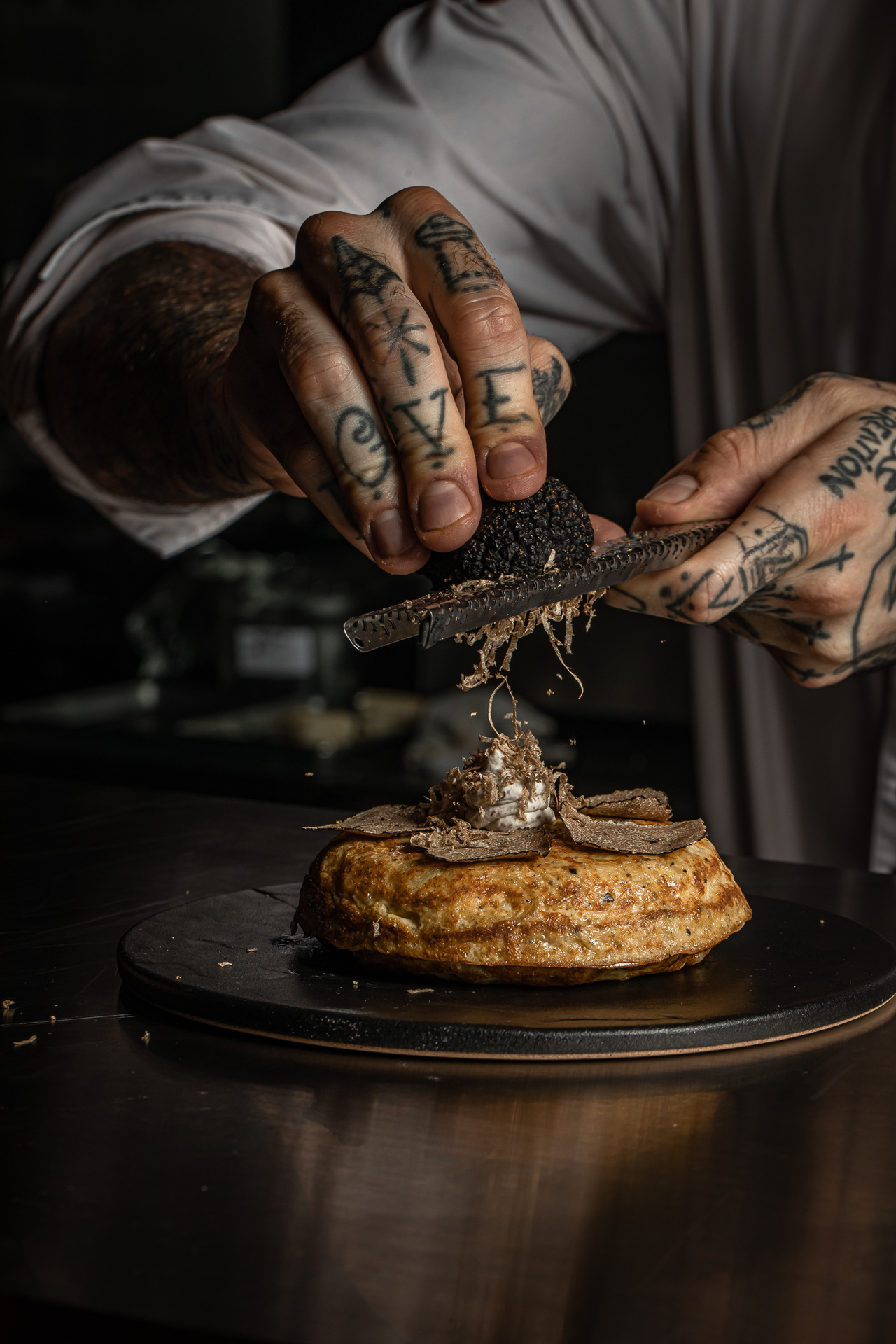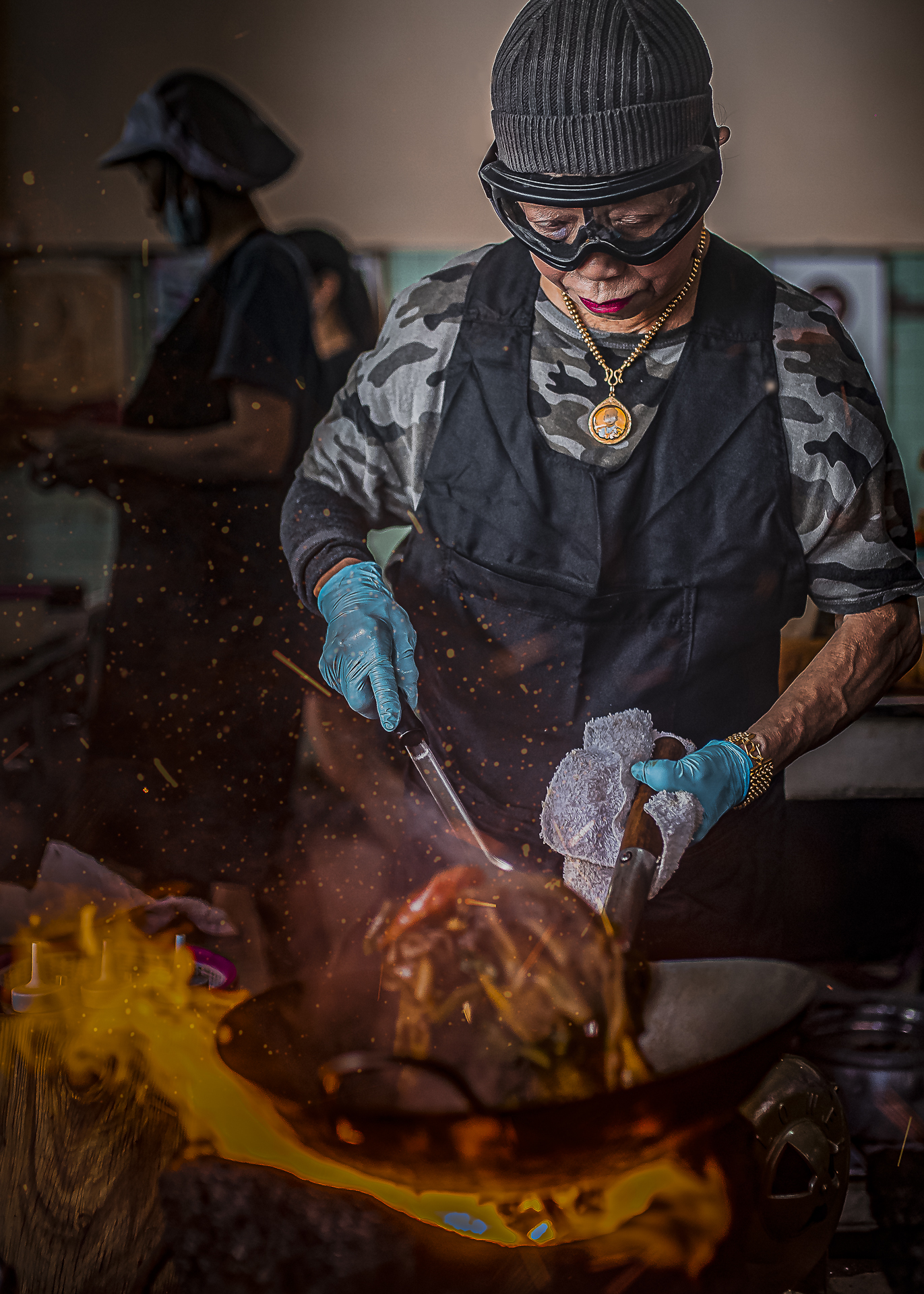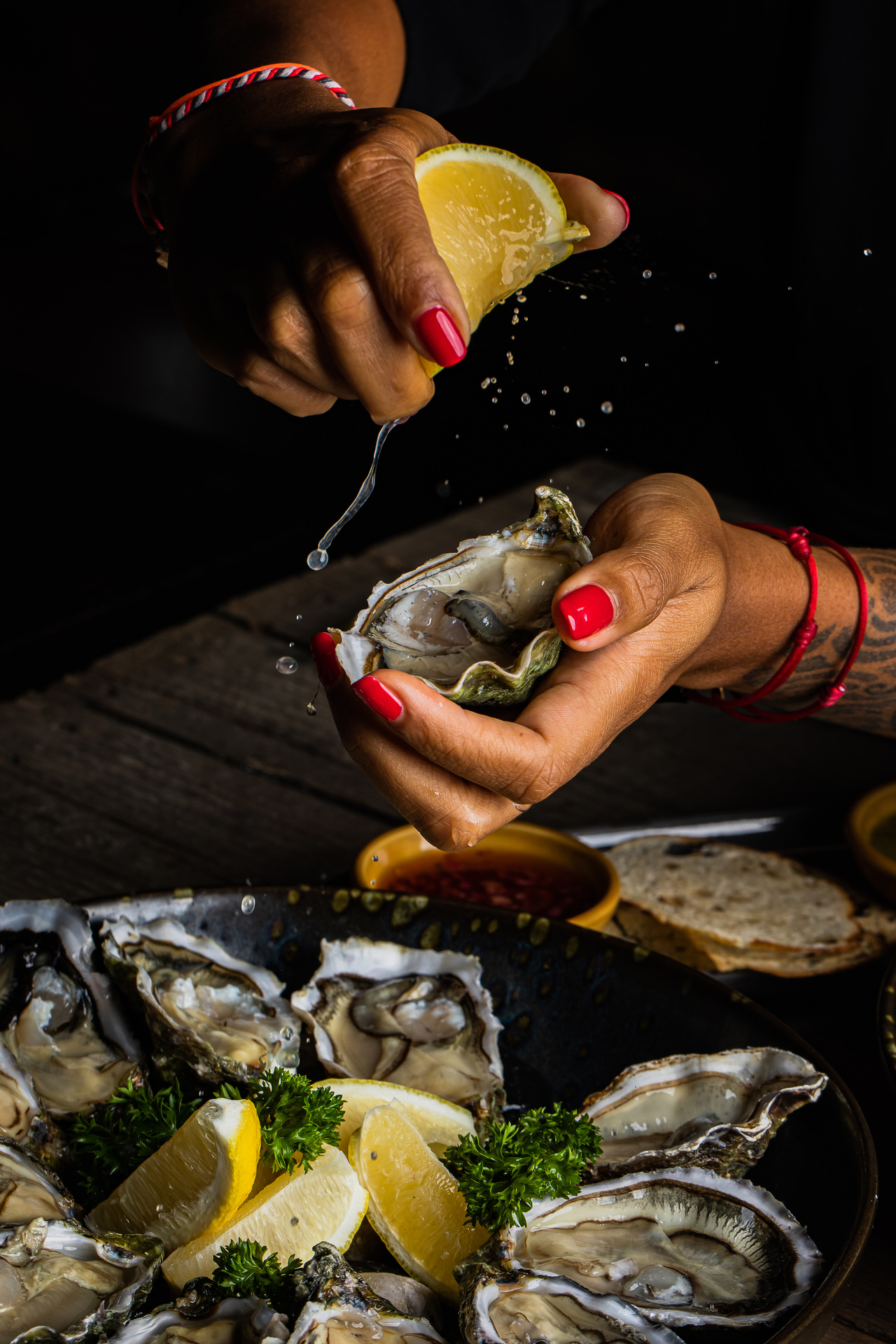How he captures the moment.
By Aiden Jewelle Gonzales
“Honestly, give me a camera, and I can live,” Sahil Rattanaphas tells me with a laugh when he meets me for an interview, one of the rare few times when he’s in front of a camera rather than behind one. “I think it’s the mark of a true creative,” he continues, a little tongue in cheek. “They’re always saying, ‘just give me my craft, and I’m happy.’” Indeed, as the co-owner and operator of a creation and marketing agency called the Turquoise Truck Creative; Sahil, with his effortlessly stylish hair, the off-duty-chic look that I’m convinced is the de facto uniform of artists everywhere, and a debonair air; embodies the 21st Century creative.
Having gone to the International School of Bangkok (ISB) followed by Monash University in Melbourne, Australia, where an inside source informed me he showed up with a backpack, a guitar, and plenty of contagious dreams; Sahil’s approach to life is to take it by the horns and chase after his passions, and this has served him well over the years. With nothing more than grit, a love for food, an iPhone, and self-taught skills in photography, Sahil, together with his brother, Nikhil Rattanaphas, started the Turquoise Truck Collective, the origin of which is as intriguing as its name. “We were in Bali, and we passed this big turquoise truck,” he recalls. “I said to Nikhil, ‘One day, when we make it big, that’s the truck we’re gonna get, and we’re gonna put all our equipment in there and drive around Bangkok.’ And he remembered that conversation and came up with the name. While we don’t have a literal turquoise truck yet, who knows what the future holds?”
These days, the Turquoise Truck Collective is renowned in Thailand’s food photography scene, with some of the biggest names in hospitality as their clients, as well as Michelin-starred and celebrated restaurants. Having checked out their portfolio and been ensnared by the beauty of their shots, which are simultaneously evocative and dynamic, I ask him how he knew that his photos would resonate so well with people. Surely, I ask, it would have occurred to him that the safer route was staying with his family business of textiles. “The family business just wasn’t my passion,” he answers easily. “You can live your life doing something that you know, be comfortable, do your nine-to-five, and go home. Or you can play every day. And that’s what I decided to do. I retired at the age of 30, and just play every day. And so many doors opened!”
He admits with a self-deprecating chuckle, however, that the one aspect of ‘play’ that he’s cut out is eating during shoots. “I used to eat all day, and in five years, I became 20 kilos heavier,” he recalls. “Now, rule number one is not eating during the whole shoot.” With a smile he capitulates, “But I will drink a Negroni!” – a sentiment that sums up Sahil’s approach to his work and life in general. Laser-sharp focus, while still leaving room for fun and the joys of art. He tells Masala more.
You initially had no experience in photography, but you self-taught yourself everything you know. What prompted your interest in the craft in the first place?
I had a company that used to export handicrafts from Thailand to Perth when social media wasn’t a big thing yet. While the company was very numbers-driven – it was all about hitting our KPIs, engagement rates, ROIs, etc – we still needed good content to hit those numbers. I bought a little camera and started taking photos, and one thing led to another.
We needed to get Instagram off the ground fast, so I tried my hand at it, and it worked in Australia. When I came back to Thailand, I wondered if it’d work for other industries as well, so we tried it for a coconut water brand, then a restaurant, and they were both a success. This was back in 2012, and since then, I started making more and more content for social media with just an iPhone and my camera. In the beginning, I never thought it would be anything other than a side hustle.
Having grown up in both Thai and Indian cultures, both of whom are very creative and have such rich visual elements, what are the ways that your roots have influenced your approach to photography?
Both cultures love to eat, right? [Laughs] We only shoot food – 99 percent of my content that I create is either food or cocktail-driven. It stems back to the love for food above everything else, in both Thai and Indian cultures. I grew up on Anthony Bourdain instead of cartoons, and I would watch cooking shows instead of what the other kids were watching. I always had a vision of how food should look and the emotions connected to it. And that’s what we push forward. It’s not just shooting food; it’s trying to capture the essence, the emotion behind it, the feeling that the chef, hotelier, or whoever is trying to portray.
Photography, and especially food photography, is a very specific art form. How do you make the food come to life in photos? How do you end up capturing that essence you talked about?
It takes a long time, and you have to create your own style. You start by imitating other photographers and trying to learn technique through that. But then along the way, you figure some things out that other people may do, but not in the same combinations. Our technique is very bold, not stylised, structured, and motion-driven. We try to capture the in-between moments, not the finished product. We focus on different angles that maybe you as a customer wouldn’t get to see; it’s what we find interests people.
It’s still a bit unusual in the Thai-Indian community to start a business in the creative field. Did you receive any pushback for not going the more traditional routes of staying in the family business or going corporate?
I’m lucky I had incredible support from my family; it was insane. I didn’t think I would get that much support but everything I needed, they just delivered. They didn’t question me for a second, and they kept pushing me in the right direction. My mum’s an artist in her own right; she sings, she dances, and she used to do all my art projects when I was growing up. [Laughs] She got me into seeing the world from a different perspective, which is almost always more beautiful. She inspires me a lot.
At first, people did ask me, “What are you doing?” because it’s not a traditional career choice. Around 99.9 percent of photographers don’t make their passion into a career. They’re doing small projects and scraping by, and they do it because they love it, and that was the same for me. I just got had some lucky breaks.
You’ve now made a name for yourself in Thailand’s food photography scene – your clients include Michelin-starred and other renowned restaurants. What would you say was your big break that led to your current success?
I still think I haven’t hit my big break yet, to be honest. This is just the tip of the iceberg. We’re gonna grow a lot bigger than this in the next few years. My philosophy is, the more you know, the less you know. For the first eight or nine years, I thought I knew it all. And then by year nine, I realised I don’t know anything! And that’s where I am right now, figuring out how to reach an even further point from where I am now. I love what I do, but there’s so much more on the horizon.
What’s the most exciting project that you’ve been part of?
We shoot global campaigns for the Hyatt Group, and it’s the most fun week of the year. Once a year, they fly in hundreds of chefs from around the world to Bangkok, and we shoot them cooking in hundreds of stations for a week straight. It’s not just the photography that I love, it’s meeting all these incredible, like-minded people from all over the planet. That’s kind of what photography is; it gives me a route to travel, to be anywhere while I have my camera.
Tell us a little bit about the process that led to both your brother and you leaving the family business and starting the Turquoise Truck Creative.
I left about three or four years before my parents retired. Honestly, textiles is a bit of a dying industry in Thailand, mainly because China has taken over a lot of the textile market. We had two choices: to either keep dying, and have business slow down year after year, or to jump ship and try do something else. We were taught to be adaptive and to pivot when sh*t hits the fan, so that’s what I did. My brother was also doing his own thing.
Soon, I reached a critical mass point where I couldn’t handle the volume of my clients, as well as juggling both the admin and the creative aspects. It started becoming work again, and the ‘play’ aspect was leaving the window. I started looking for people to hire, but that’s my brother’s strong suit. So I asked him to come and join me, as he’s able to handle all the nitty-gritty, annoying details like invoicing, contracting; protecting me basically! He’s my older brother, and he’s always been my mentor. But while he was doing the admin work, I helped him hone his photography skills, and in turn, I became his mentor in that aspect. Now he can shoot just as well as I can!
You mentioned that there’s still a lot of room to grow. And in the photography business, there’s so much competition these days. How do you differentiate yourself and ensure that your work stands out in the market?
I don’t. I think there are a lot of great photographers out there. I don’t try to differentiate myself; I just do what I love, and I’m lucky that people notice what I do. And I think that passion comes through in our photos. A lot of people are technically better than me, but it’s not just about technique. It’s about being able to see something through the artist’s point of view. And it’s art, so it’s always subjective.
The Turquoise Truck Creative offers a diverse range of services spanning social media campaign management and web design, videos, and more. How do you balance and integrate these different aspects in the business?
We started with all those services off the bat. Photography was the last thing we added. We’ve been managing maybe 200-250 restaurants in Bangkok since we started, and we were there at the opening of a lot of these restaurants. We still open a lot, but we’re more in the corporate game now; for example, we’re currently working with InterContinental to open their Sukhumvit property. We’ve siphoned down our client list to bigger clients, which are our bread and butter.
You’ve mentioned that there’s a lot more that you’re looking forward to. What’s your vision for the future, personally and professionally?
We’re trying to figure out how to scale right now. I’m a perfectionist, and we’re currently at a crossroads, figuring out which way to go, whether to get bigger clients, or to build our team. Hopefully it comes to me in the next few years, but in the meantime, I’m having a lot of fun getting there!










